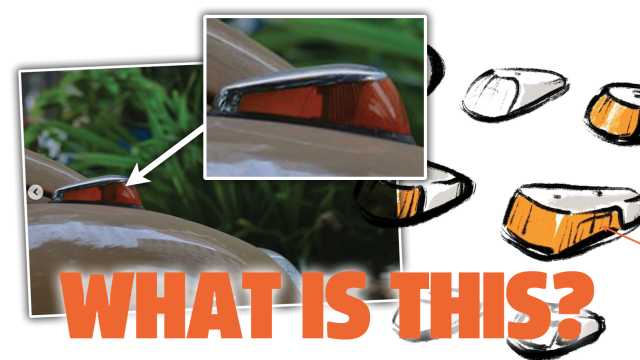The other night I was hanging out at Flashing Amber’s, my local turn-signal fetishists’ bar (not to be confused with The Red Lantern, the pub I go to when I want to talk about taillights) when a friend I know from the turn indicator enthusiast community came up to me, slightly drunk and with a devious-looking smirk on her face. She was holding her phone and wanted to show me something on it. Something to do with turn signals.
“You’re the one who’s all into Volkswagen signals, yeah?” she asked, knowing damn well I was. “Then look at this.”
She slid her phone across the bar, and on it was this Instagram post:
“Go to the fourth image,” she said. I did, and I saw this:
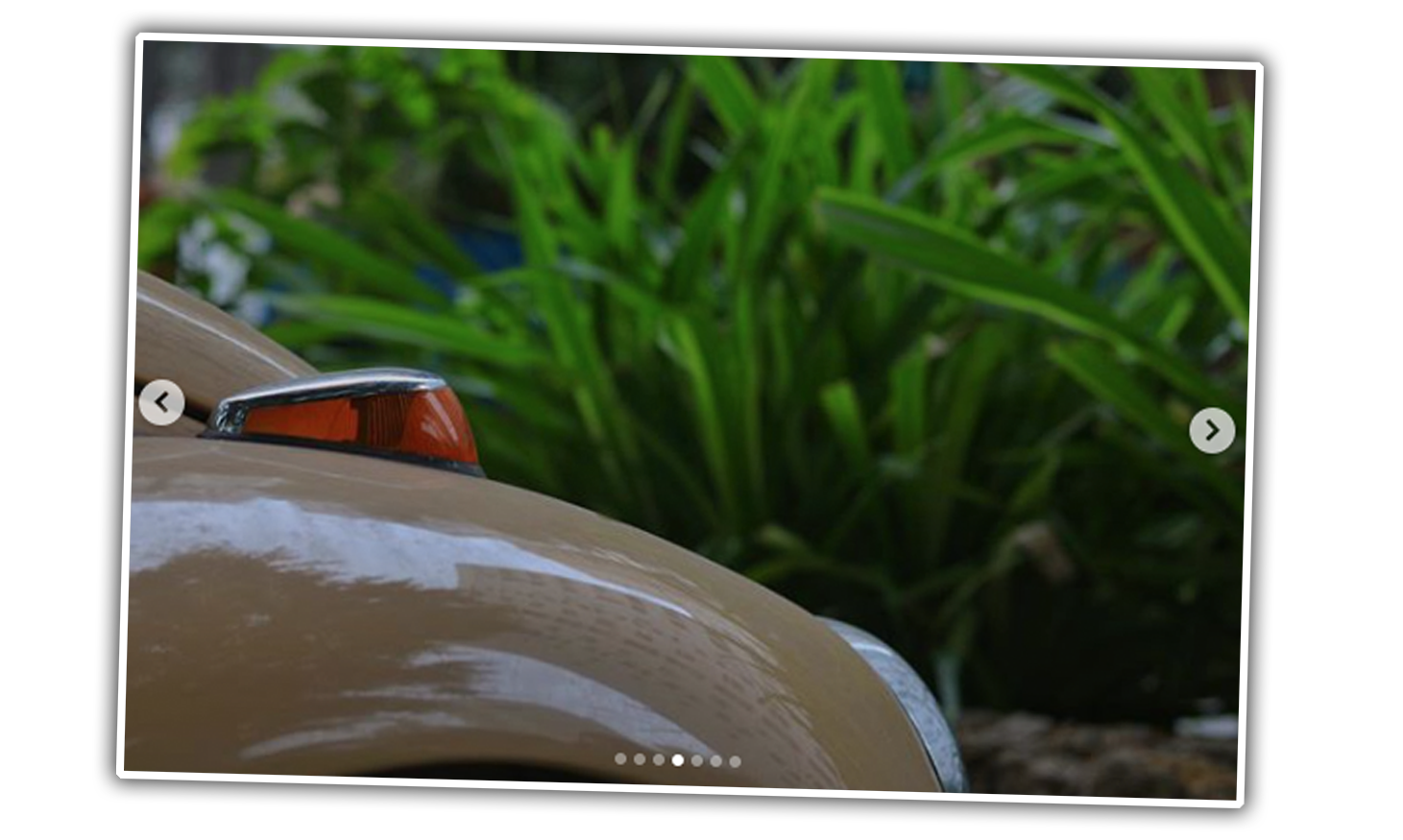
I spit-took my mouthful of Blinker Fluid all over the bar, and I’m pretty sure at least half of it shot out of my nostrils in a pair of burning alcoholic jets.
Now, I’m not so up my own rectum that I expect any of you out there to understand why the hell I was so flabbergasted, so I’ll do my best to explain. You see, what I’m looking at here is a type of VW Beetle turn indicator I did not realise existed, and pretty much all of my self-worth is tied up in how much I know about Beetle turn indicators.
First, you’ll need some background. Beetles started life indicating their turns with charmingly ridiculous semaphore indicators, these funny little arms that would pop out of the B-pillars.
They moved to flashing-light indicators in 1955, starting low on the fenders, but moving to the tops of the fenders in 1958, where they’d stay until getting stuck in the bumpers in 1975 (for non-U.S.-market Beetles, at least).
Since the ones in question are fender-top ones, let’s look at the evolution of those. I’m too amped up to find photos of each version online, so I’m just gonna draw them real quick for you:
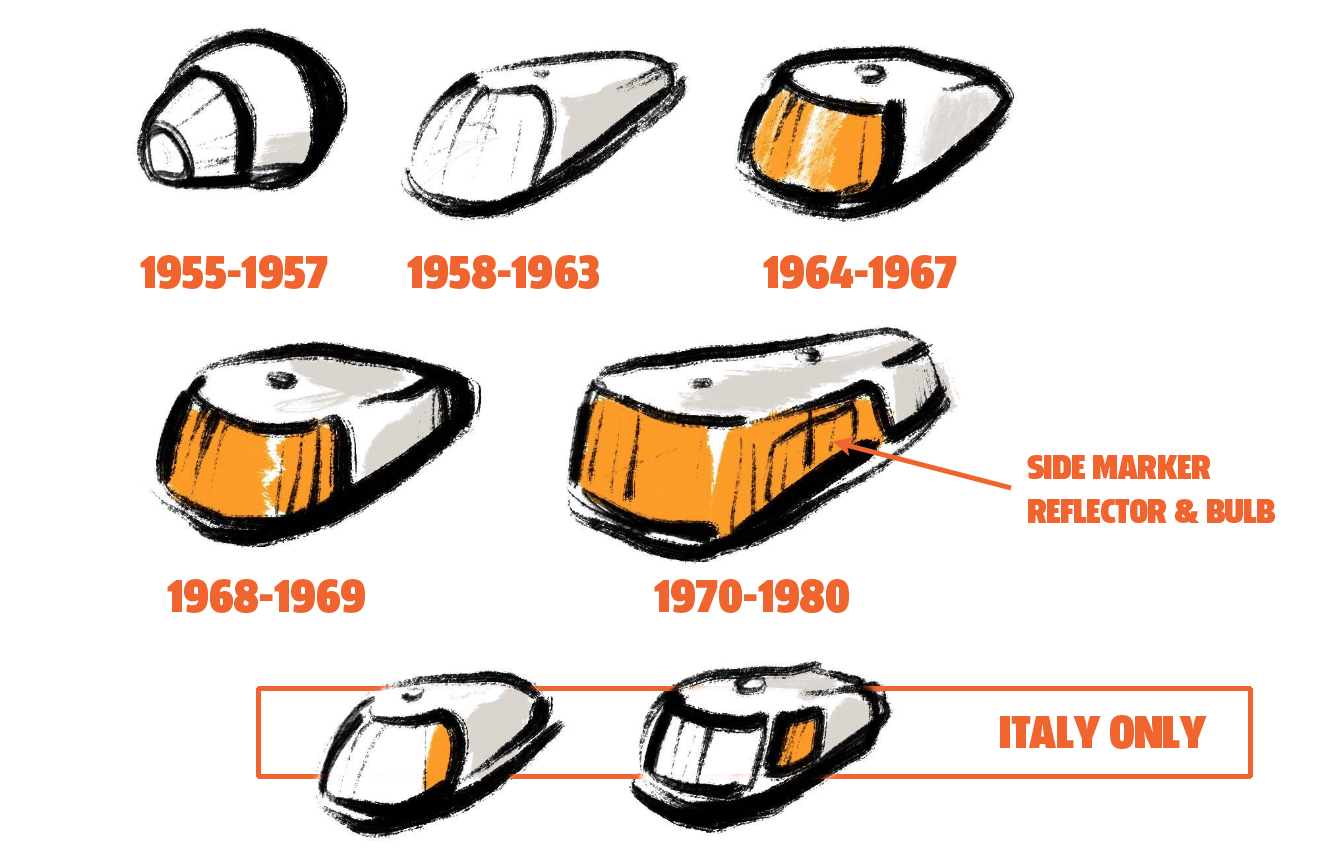
The ’55 to ’57 ones and the ’58 to ’63 ones are sometimes seen with amber lenses, and some of the more recent ones are occasionally seen with clear lenses, but those are usually aftermarket dealies.
The Italy-only ones are especially interesting, as Italy mandated clear indicators but an amber side marker lamp, so those versions had little amber sections off to the sides.
In 1970, VW changed the front indicators to huge units that incorporated a large amber side marker reflector and a second bulb inside for the side marker lamp. I have these units on my own 1973 Beetle:
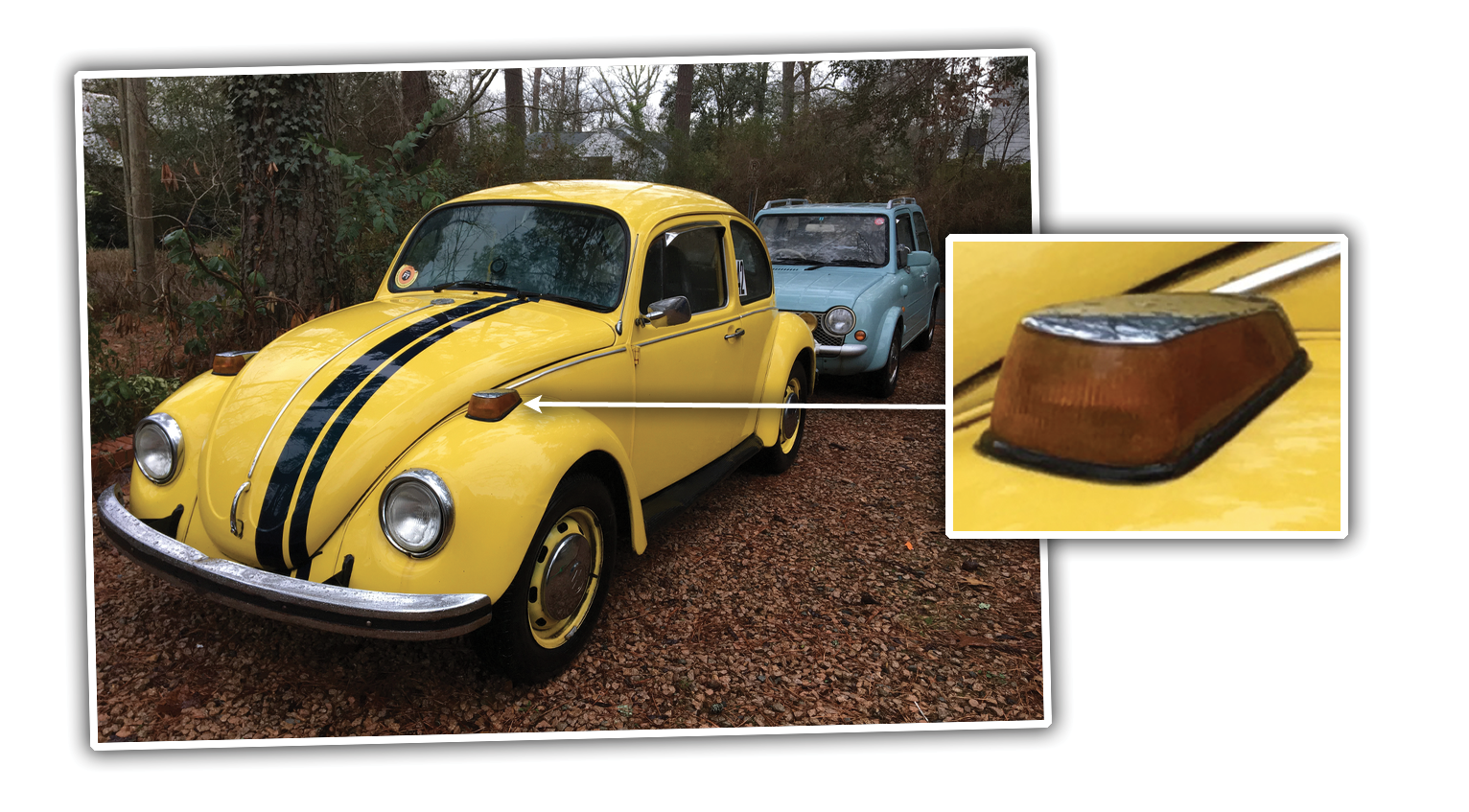
I’m very familiar with these, and understand that they were made specifically for U.S. side marker lamp/reflector rules that took effect in 1970. They were not generally used elsewhere in the world, as you’ll find ’70s Beetles and Super Beetles for European markets with the older, smaller ’68-69 lights. Here’s a German-market ’74, for example:

Now, Brazilian Beetles (they called them Fuscas) are their own weird thing in many ways, but generally, they too stuck with the smaller ’68-’69 lights before moving the indicators to the bumper as well.
OK, so, back to that Instagram picture. The Fusca shown there is a 1982 Fusca 1300GL — a slightly upmarket Beetle made in Brazil to compete with some of the much more modern cars coming out in the 1980s like the Fiat 147.
VW do Brasil gave it such decadent luxuries as a cigarette lighter, rubber bumper inserts, a rear defogger, better seats and this crazy rounded-corners “modern” dashboard, goodies you can see in this old ad:
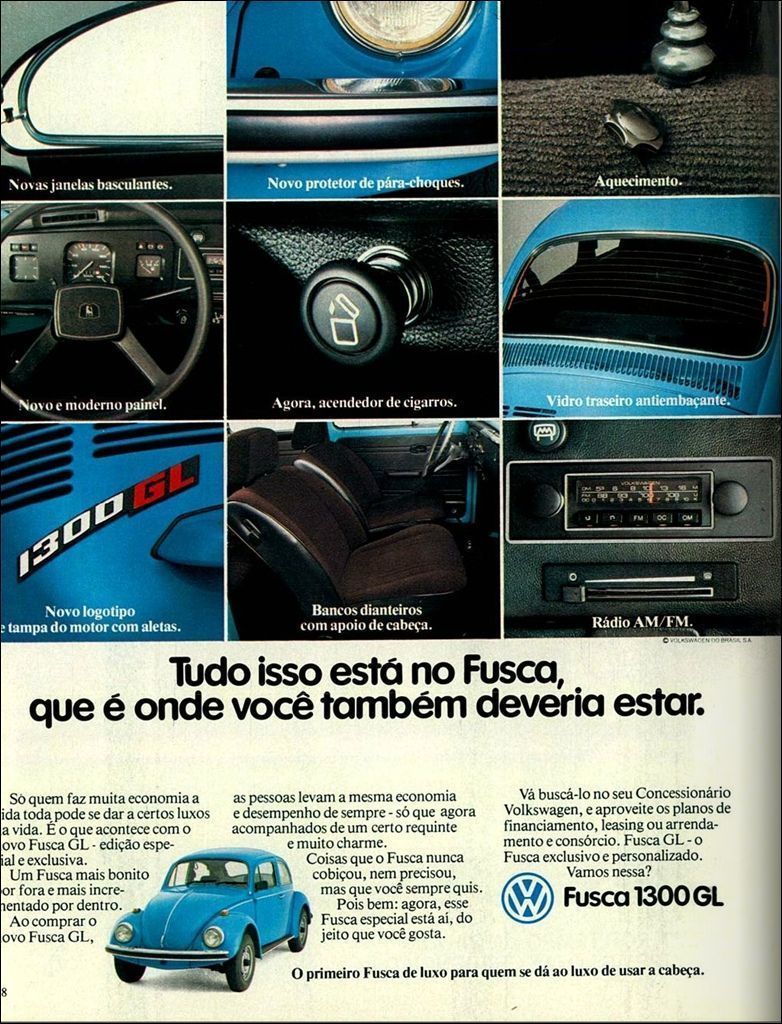
Pretty fancy, right? Rubber bumper inserts? Who was this thing for, a sultan?
Also, let’s get a better look at that dashboard:
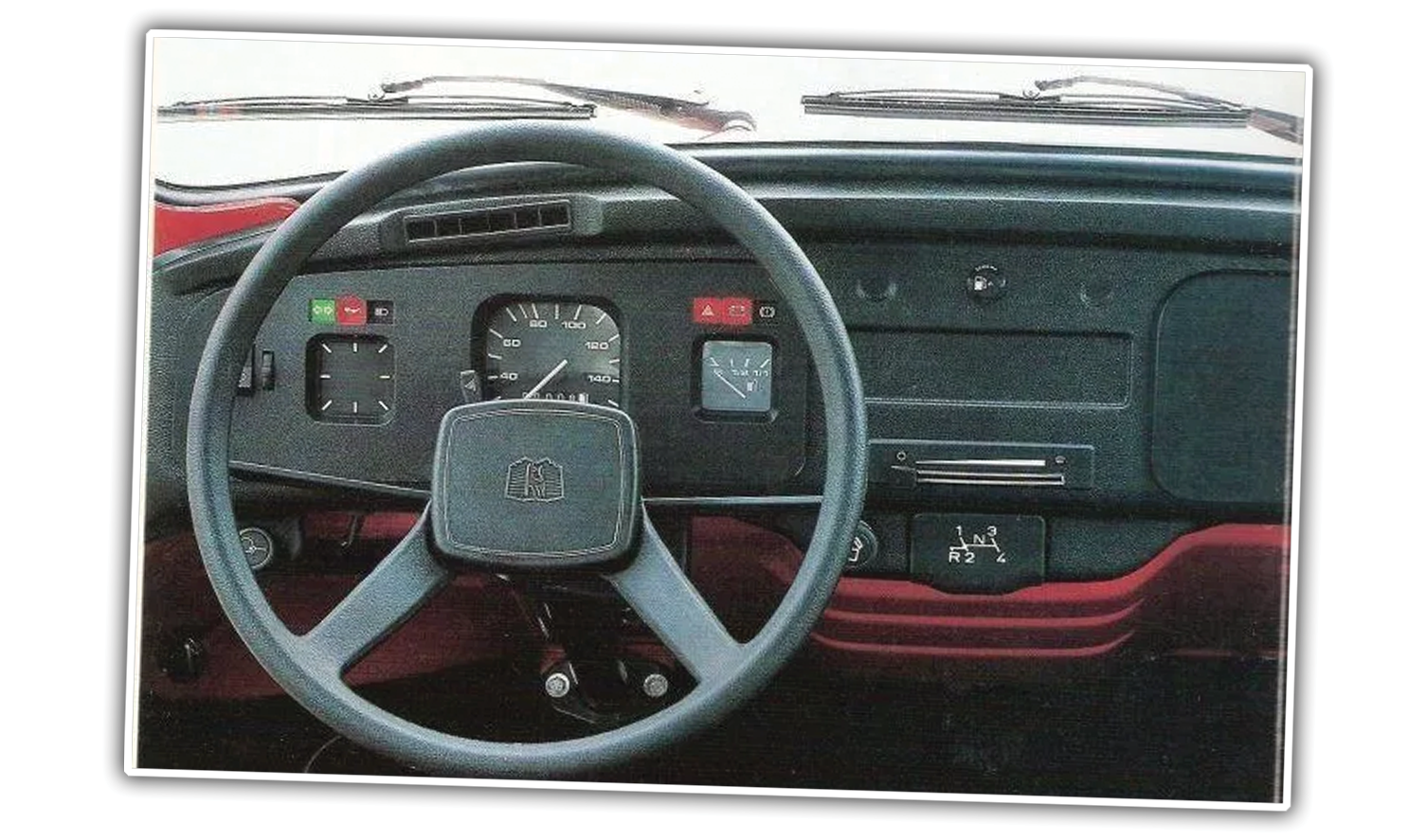
Man, that’s weird. I kinda love it. Anyway, we’re getting off-track here.
Now, here’s the problem: the indicators on this model look like the normal ’68 style used all over, and not like the ones in that Insta picture.

The ones in the Instagram photo are amazing because they seem to have the same sort of side marker reflector (and bulb?) as the U.S.-spec lights from 1970 and up, but they are clearly a different unit. Look:
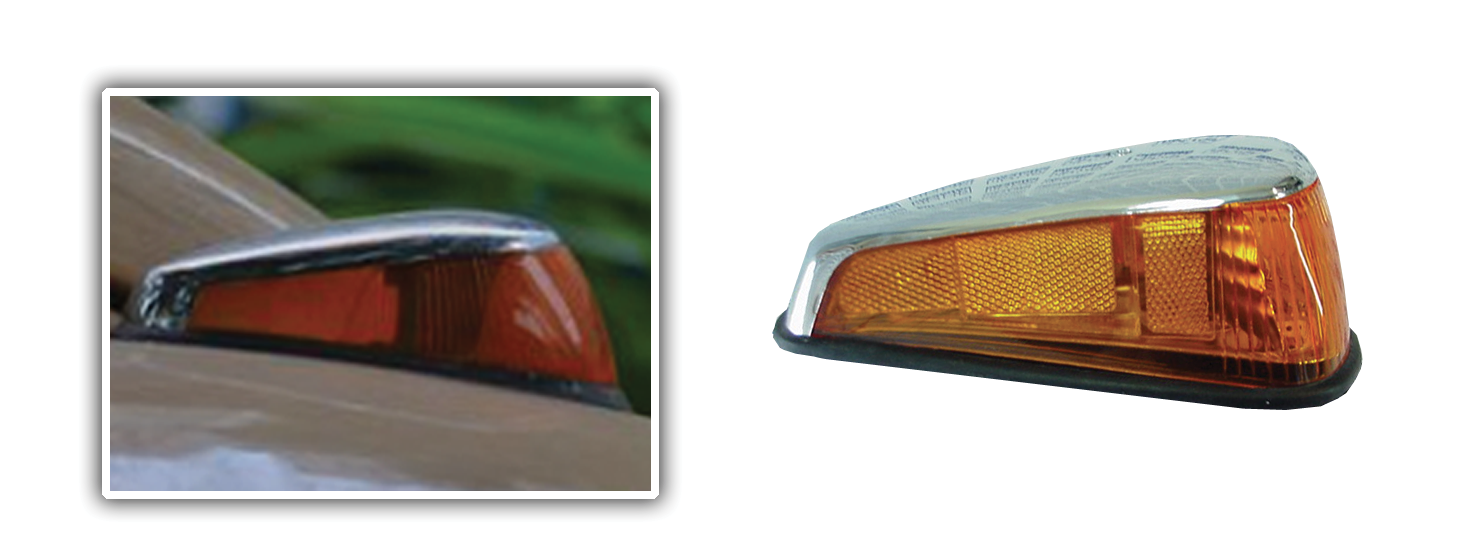
They’re not the same!
It looks like the ’68 size and shape light was modified to incorporate the side marker feature. The problem is, I have never heard of any Beetle that used such a light, especially since the side marker requirement was really an America-only thing.
I don’t think these are one-off custom lights, either, because this is precisely the kind of thing customizers never seem to do — add more regulatory compliance. I’ve seen lights modified with clear lenses or sometimes you see the big U.S. lights swapped sides to show more chrome instead of the reflectors, but almost never do you see customizers adding marker lamps unless they absolutely legally have to, and in Brazil, in 1982, they didn’t have to.
It just doesn’t make sense. I’ve had trouble finding other examples of these indicators, too, but I have found a few possible ones, like this one, again on Instagram:
I just want to know if this was a Brazilian factory turn signal lamp, and, if so, what cars was it used on, and why? Was it an aftermarket lamp for Brazilians who really loved the idea of side marker lighting? Were these from some other market and just put on there?
I don’t have the answers I need, and it hurts. But, I’m hoping to find out.
This is the life of a turn signal obsessive, though. Each day, a new opportunity for mind-expanding mysteries, all cast in a pulsating orange glow.
